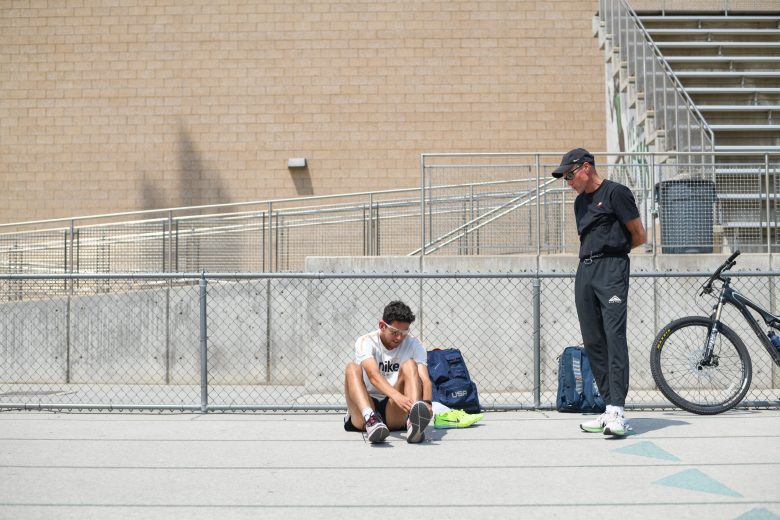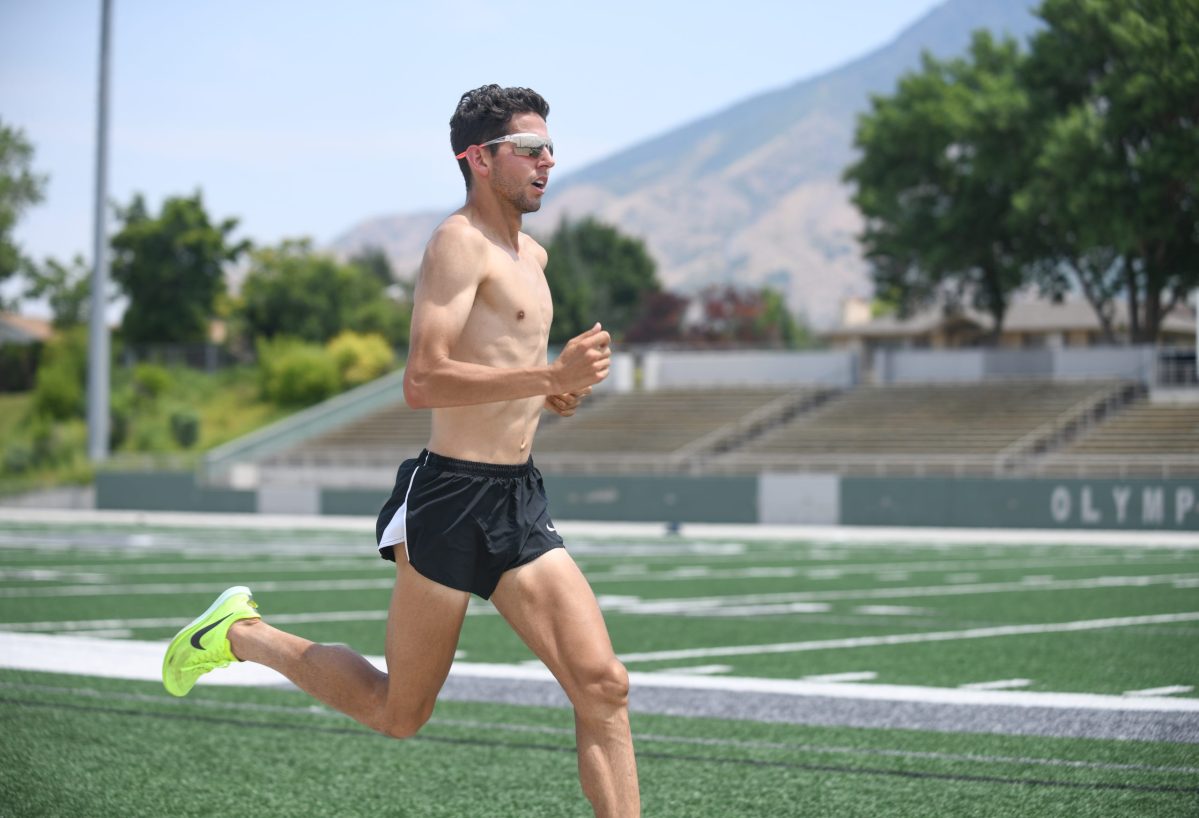Park City is home to many Olympians. What’s different about Grant Fisher is he’s chasing gold in the Summer Games.
The No. 1 runner at the U.S. Olympic Trials in the 5,000 meter and 10,000 meter track events is headed to Paris after living and training in Park City since October.
This is not the first time Fisher has punched his ticket to the Olympics: He competed in the 2020 Tokyo Summer Games, where he finished fifth in the 10,000 meter race. Two years after competing in Japan, Fisher nabbed the American records for the fastest 5,000 and 10,000 meters with times of 12:46.96 and 26:33.84, respectively. Last year, he added to his list of records by running a 7:25.47 in the 3,000 meter race.
The bottom line is that since Tokyo, where he finished with a time of 27:46.39 and missed the podium by two spots in the 10,000, Grant Fisher has gotten faster.
In the past 10 months, his preparations for Paris have brought him here to the Wasatch Back.
“When I made this move, I was 100% prepared to do everything alone,” Fisher said. After running for his dream school, Stanford, Fisher spent four years at the Bowerman Track Club. He said moving to Park City from Oregon was “a little scary” and a huge risk during an Olympic year.
“Common knowledge in track is don’t change anything in the Olympic year,” the American record holder for the 5,000 and 10,000 meter races said. Before he knew he was going to move to Park City, Fisher had asked his high school coach, Mike Scannell, to train him again.
“When I first asked him to coach me, I didn’t know I was going to move here,” Fisher said. “I didn’t know who I was going to train with, where I was going to have track access and gym access, and physio and massage and all these things, and the first piece I got in order was the coaching, and then all the other stuff was sorted out.”
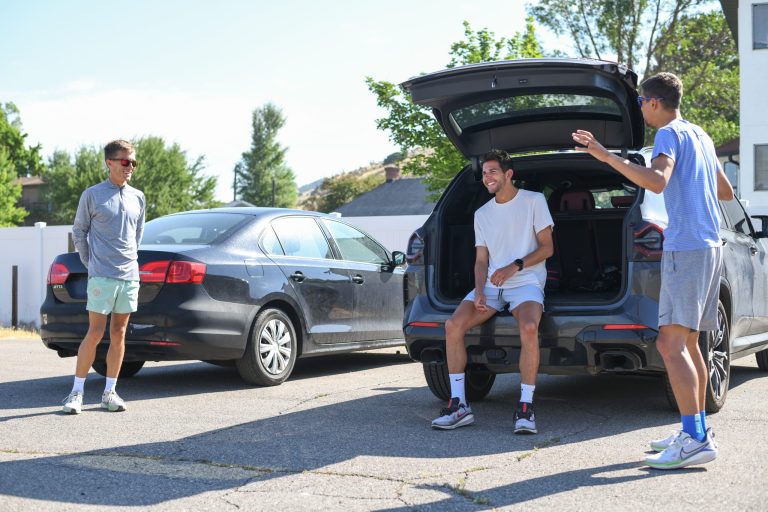
Fisher knew he wanted to live at altitude, a big benefit for a distance runner. He said he was looking at the main places people train at altitude, including Boulder, Colorado, Flagstaff, Arizona, and Park City, where Fisher had spent time before with his former track club. When he consulted Scannell about what the best option would be, the decision was left up to Fisher.
“When I talked to Mike … he was like, ‘Look, you’ve been a professional for years. You pick the location, and we’ll make it work.’ So I picked here, and it’s been great,” he said.
Park City has had more to offer him than altitude and access to facilities.
“There’s a community aspect that has been fun,” he said, mentioning an unexpected new group of friends. While training at the U.S. Ski and Snowboard Center of Excellence in Park City, he has been able to work out alongside athletes who have their sights set on the counterpart to the Games in the summer.
“I would never hang out with skiers and snowboarders. I’m always around track runners,” Fisher said, describing how the intense peaks of his season are opposite from athletes who rely on snow or ice for their events. “It’s been cool getting to know them and having friends that aren’t runners and just a different perspective on training.”
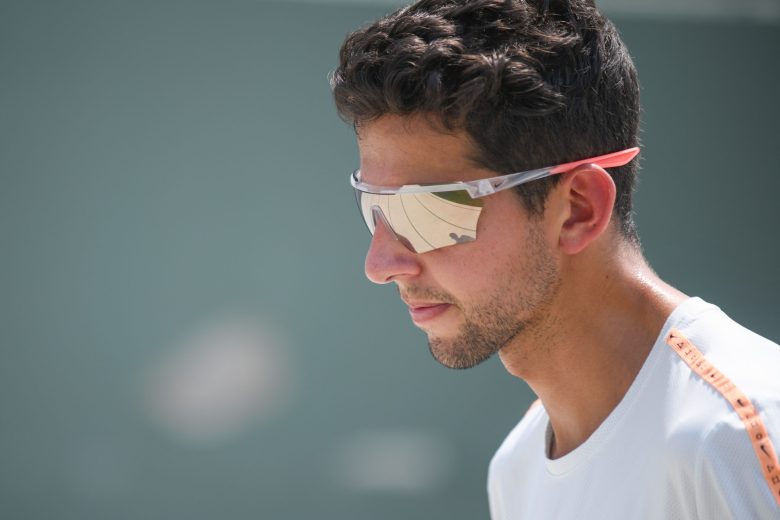
Besides the community he has formed with skiers and snowboarders, Fisher said there have been several familiar faces in and out of the area since he moved here and was staying with a friend last October.
“When I got up here, I got connected with a bunch of people in Salt Lake City, and I had tons of people to train with,” Fisher said.
This past week Fisher was joined for a run by Conner Mantz, who will be representing team USA in the men’s marathon race in Paris, as well as Matthew Centrowitz, who won gold in the 1,500 meter race at the 2016 Rio Olympic Games.
“I’ve never seen him happier,” Fisher’s girlfriend and occasional bike pacer, Sarah Walker said about his move to Park City and his current training setup. She said this year was a big year for him, and assembling the team around him in Park City shows how driven he is.
Leading up to the final week stateside, Fisher was not focused on building fitness at this point in the season, but rather fine-tuning before the biggest races of this Olympic four-year cycle.
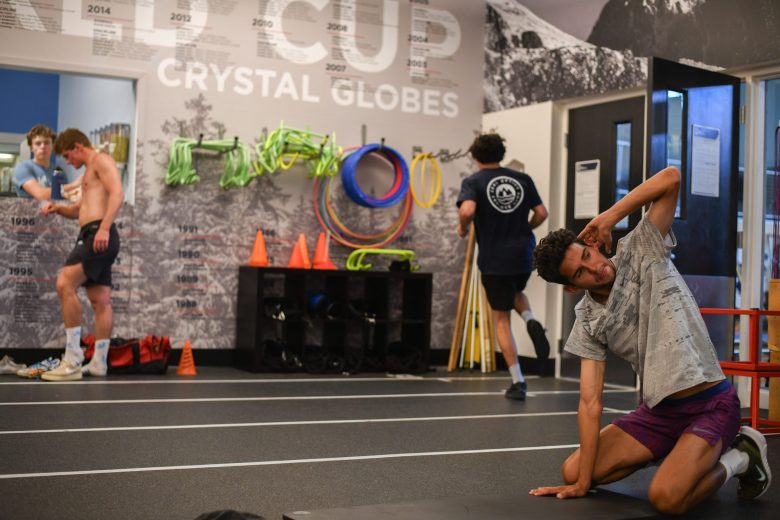
Last Saturday Fisher, Scannell and Walker met at Olympus High School in the Salt Lake Valley for one final hard workout before leaving for Europe. Under a blazing sun and temperatures in the triple digits, Fisher endured what Scannell called a “sharpening workout.”
“The interval length was fairly short. Today’s rest was fairly short, too, because we’re still looking forward to running fast when we’re tired,” Scannell said.
The kick at the end of the race is important to Fisher — it’s how he walked away with a first place finish at the Olympic Trials in Oregon in the 5,000 meter race. During part of the final lap, Abdihamid Nur was leading Fisher. In the final home stretch, Fisher passed Nur to take the lead and cross the finish line with a new meet record, breaking the one set by Galen Rupp in 2012.
Training at Olympus was intentional to have slightly lower elevation and heat.
“We did it in the heat of the day because Paris is going to be hot,” Scannell said.
“It’s perfect prep,” Fisher said, “getting out and purposely being in hot conditions,” saying his workouts ranged from training in the valley, indoors on a treadmill with the heater cranked, and in a sauna to build his heat acclimation.
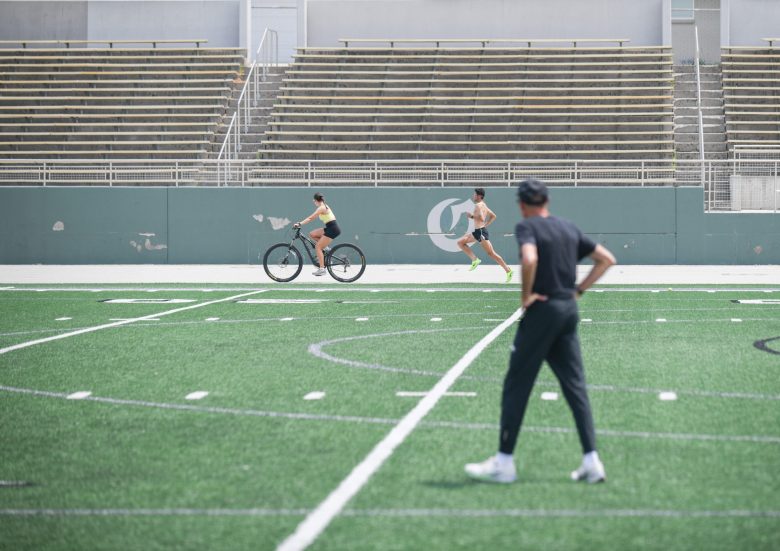
The football athletes on the field that day may not have known who was running laps at the Olympus High School track with coach Scannell yelling things such as, “Tall like a machine, here we go!” The running community and those with eyes on the Paris Olympics know what Fisher’s presence means to Team USA, some describing this as one of the best chances an American has had to medal in a long distance track race in decades. The last American to win the 10,000 meter race was Billy Mills in 1964.
The race for a medal won’t be a walk in the park. Fisher will be going up against runners such as Uganda’s Joshua Cheptegei, who won gold in the 5,000 and silver in the 10,000 at Tokyo. Scannell told The Los Angeles Times, “Maybe we are entering the stage where we’re in the conversation for a podium slot in Paris.”
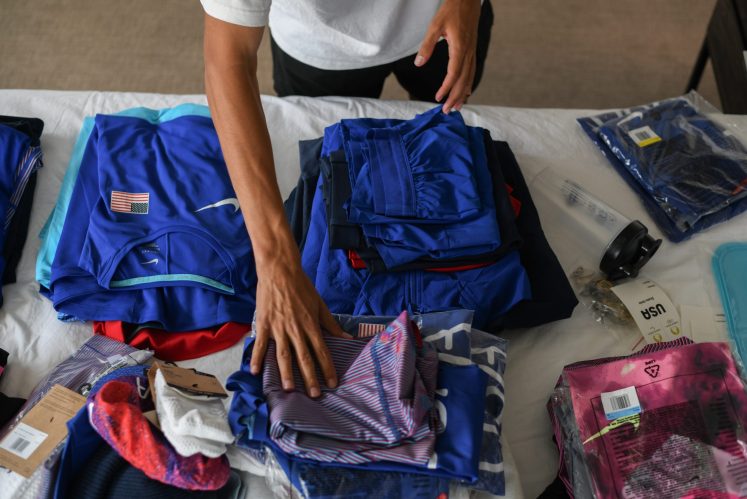
Fisher comes from a legacy of runners, his mom running at the University of Houston and his grandfather running at Washington State. His dad ran at Arizona State, alongside his son’s future high school and professional coach, Scannell.
But he said he feels more like he’s from a soccer family. His older sister grew up playing soccer, and his younger brother, Mark, is a professional soccer player for Tornoto FC II. Fisher himself only got into running for what he thought it could do for soccer fitness.
Walker, who works at the National Ability Center, will be in attendance for all his races in Paris. The couple met while they were both running for Stanford.
“The Grant you meet now is the same Grant I met in college,” she said. She leaves at the end of the month and will get to spend some additional time in Europe with Fisher before starting a two-year master’s program at Tufts University in Boston in human factors engineering.
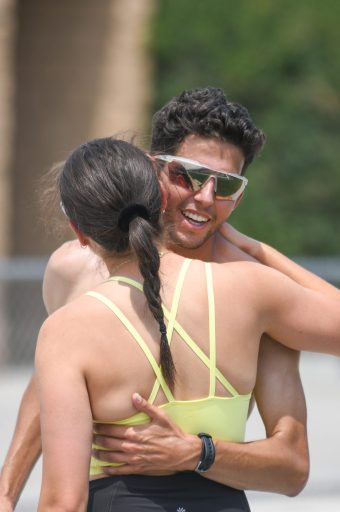
The 27-year-old long-distance track athlete will be in search of breaking an Olympic medal drought within USA running, likely with the “infectious smile” the Bowerman Track Club said they would miss in their Instagram post announcing his departure last October.
“What matters is what we do at the end of the race in three weeks,” Scannell told Fisher on the hot Olympus High School track. With Scannell on the bike and Fisher jogging alongside him for his cooldown run, the pair added to their long tally of laps they have accumulated together over the years.
Fisher will continue his race for the podium in Paris starting with the Men’s 10,000m final on Aug. 2 at 1:20 p.m. Park City time. He will compete again at round one of the 5,000m race Aug. 7 at 3:10 a.m. Park City time.
His is a painful sport. What compels him?
“I really enjoy the harsh accountability you get from running,” Fisher said.
